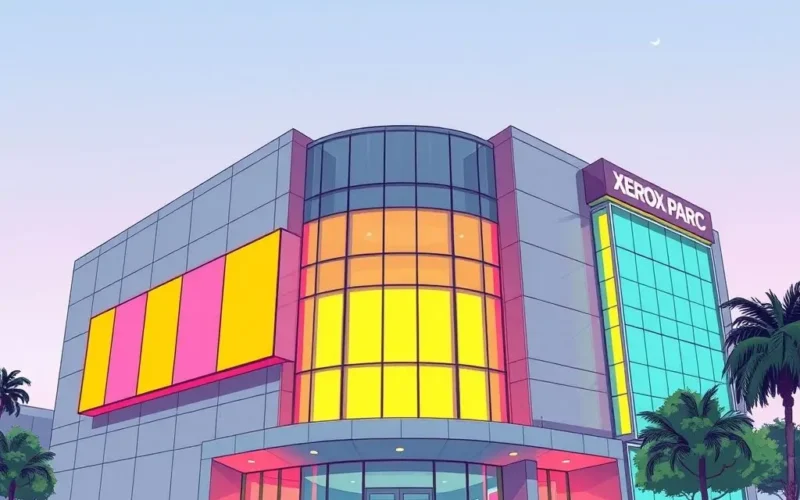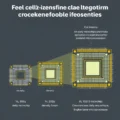Ever stop to think where the foundational tech we interact with *every single day* actually got its start? Not the shiny gadgets of recent years, but the deep roots? Often, the narratives focus on Silicon Valley giants who commercialized these ideas. But dig a little deeper, back to the 1970s and 80s, and you find a place that felt like the future arrived decades early: Xerox PARC, the Palo Alto Research Center.
Nestled amidst the burgeoning tech landscape of Palo Alto, California, PARC was more than just a research lab; it was a crucible of innovation, a playground for some of the brightest minds in computer science. Funded by the copier behemoth Xerox, these researchers were given remarkable freedom and resources to explore the future of computing. And explore they did, inventing technologies that didn’t just push boundaries – they created entirely new ones.
Before we dive headfirst into the specifics of their groundbreaking work, here’s a quick look at the story of PARC and its incredible impact:
Table of Contents
A Hotbed of “User-Centric” Thinking
What set PARC apart was a focus on how people would *use* computers in the future, not just how to make them faster or smaller. This user-centric philosophy was radical at a time when computing was largely the domain of experts typing arcane commands into teletypes.
Their vision required entirely new ways for humans and machines to interact. This led directly to the development of three pillars of modern computing that are so ubiquitous today, we barely give them a second thought:
- The Graphical User Interface (GUI)
- The Computer Mouse
- The Ethernet Network
These weren’t just theoretical concepts; the team at PARC built working systems to demonstrate and use these inventions internally.
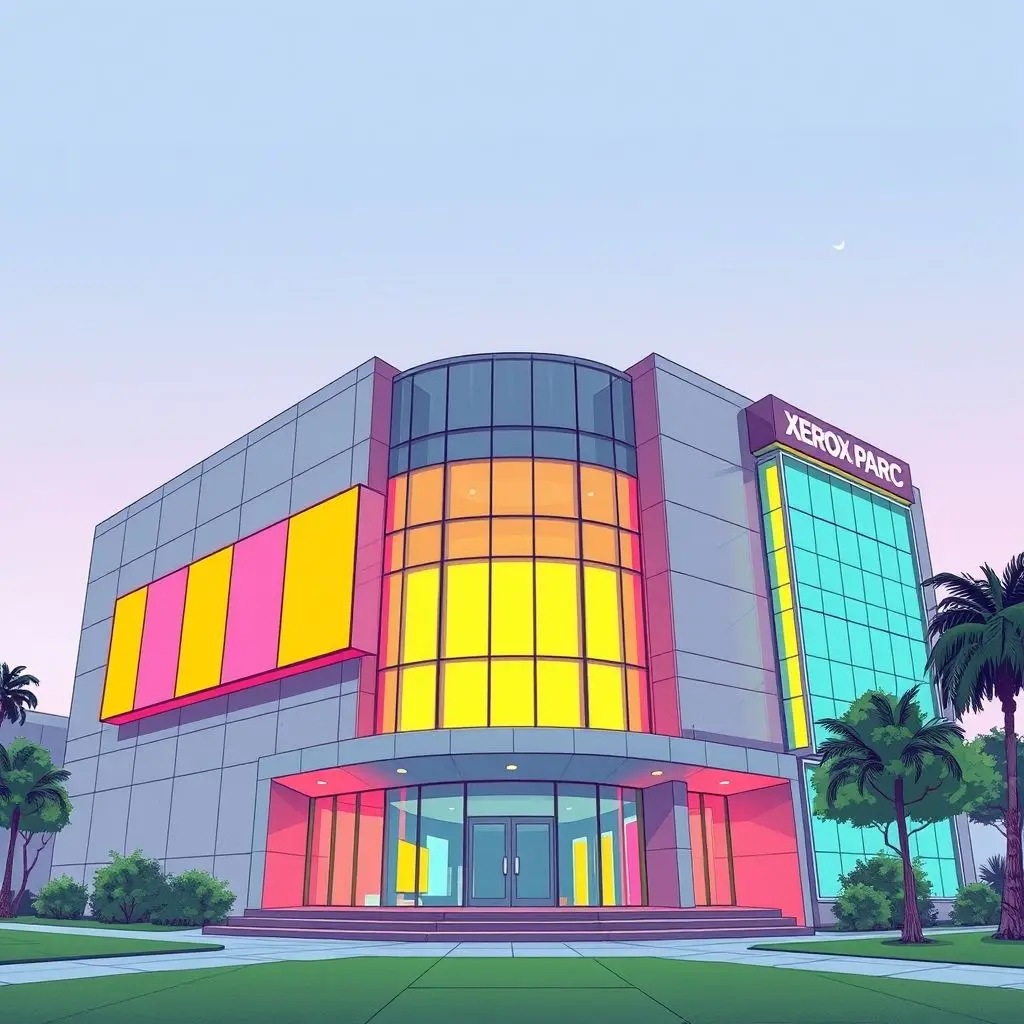
The Alto: The Personal Computer Before Its Time
To bring their vision to life, PARC needed a new kind of computer. The result was the Xerox Alto, first developed in 1973. The Alto was, in many ways, the world’s first true personal computer designed for individual use, decades before the IBM PC or Apple Macintosh were mainstream.
It featured a vertically oriented, bitmapped display (meaning each pixel could be individually controlled, unlike older character-based terminals), which was crucial for displaying graphical information. It had significant processing power for the era, internal storage, and even supported object-oriented programming languages like Smalltalk, also developed at PARC. The Alto wasn’t sold commercially in large numbers, but it was deployed extensively within Xerox and universities, serving as a living laboratory for interactive computing.
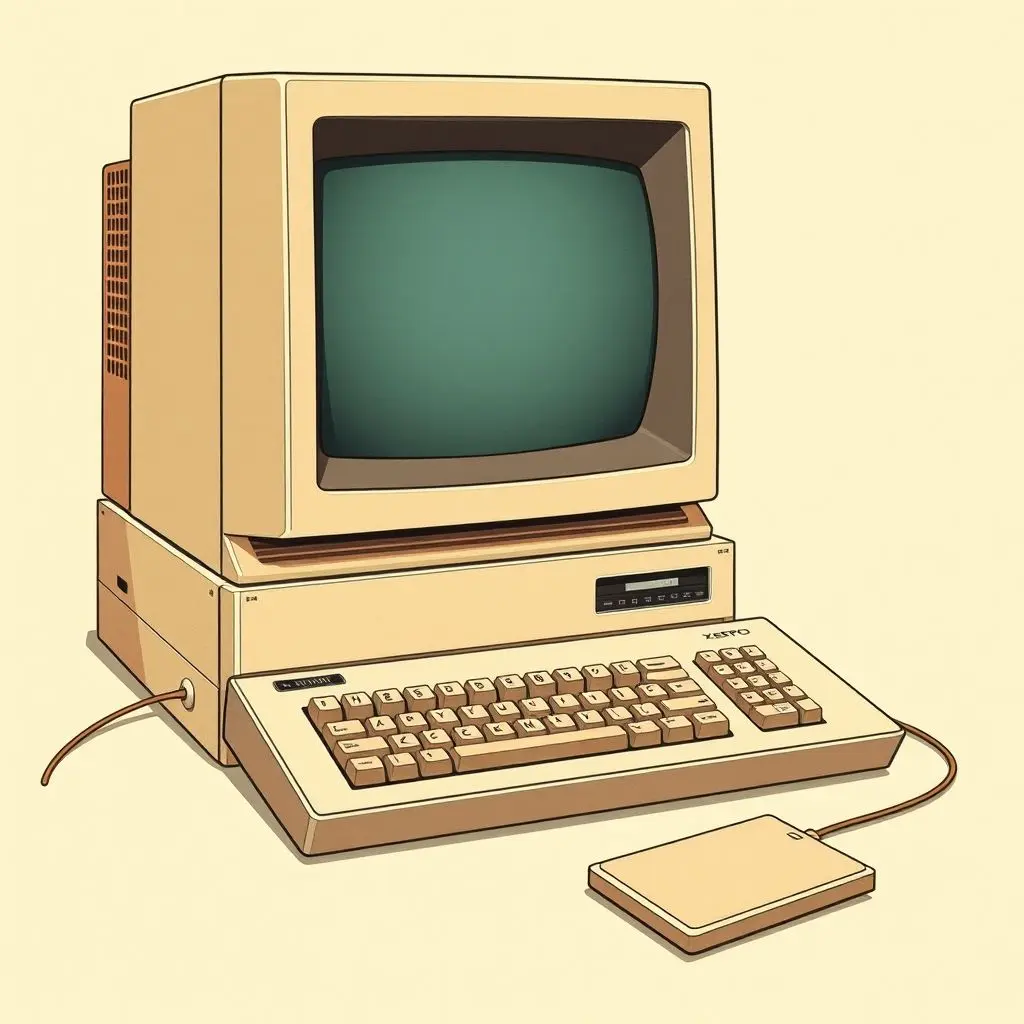
The Dawn of the GUI: Windows, Icons, Menus, Pointers (WIMP)
Before the GUI, interacting with a computer meant typing commands into a command-line interface (CLI). Want to open a file? Type OPEN DOCUMENT.TXT. Want to see what files you have? Type LIST. It was powerful but required users to remember specific syntax.
The PARC researchers envisioned something intuitive, something visual. Inspired by early work by Douglas Engelbart and others, they developed the first comprehensive graphical user interface. On the Alto’s bitmapped screen, users saw windows (overlapping areas displaying different programs or documents), icons (small images representing files or applications), and menus (lists of commands). Interaction wasn’t just typing; it involved pointing and clicking.
This WIMP (Windows, Icons, Menus, Pointer) paradigm, pioneered and refined at PARC, completely changed how people thought about using computers. Xerox did attempt to commercialize a version of this system with the Xerox Star 8010 Information System in 1981, but its high price limited its success.
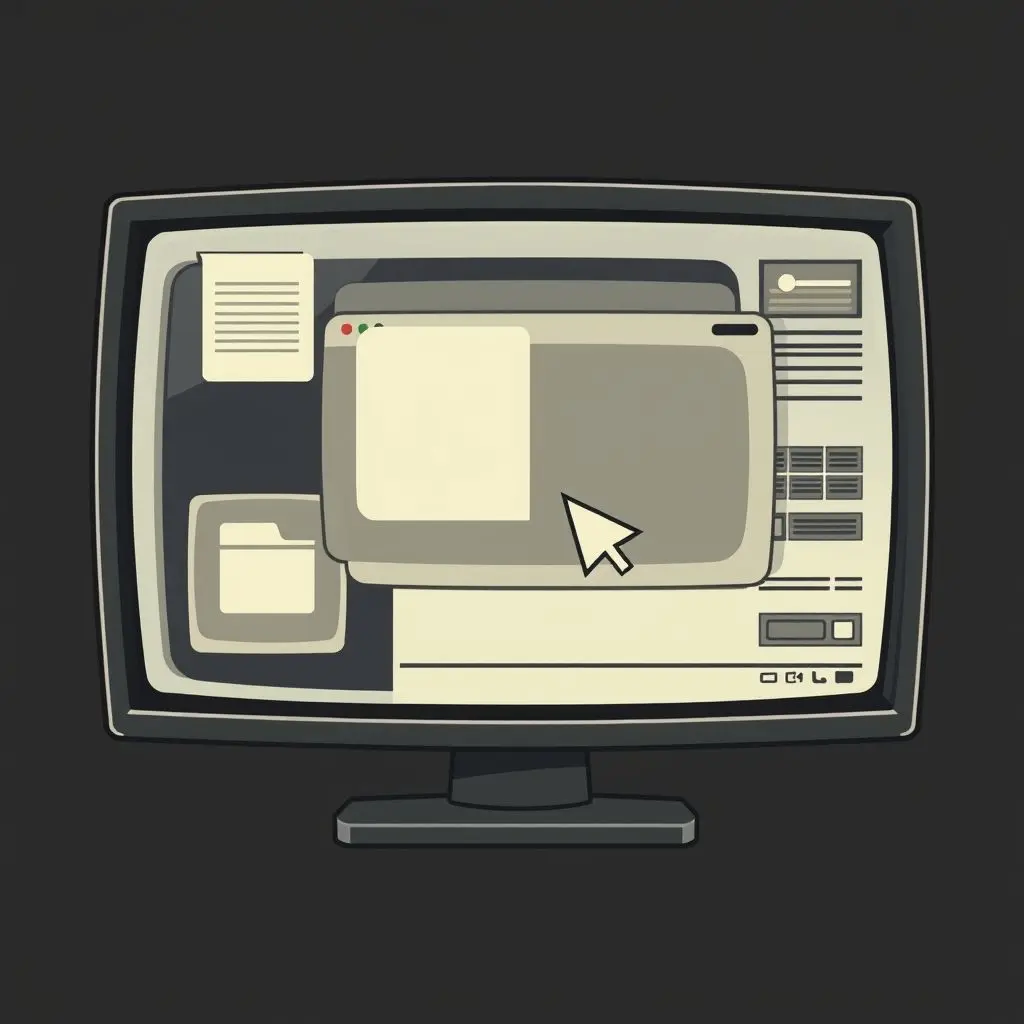
The Humble Mouse: Pointing the Way
A graphical interface demanded a new input device. Typing coordinates was cumbersome. A pointer on the screen needed to be controlled naturally. While Douglas Engelbart invented the *concept* of the mouse in the 1960s, it was the team at PARC, particularly Bill English (who built Engelbart’s first prototype) and later improved upon by others, who refined the design and, crucially, integrated it seamlessly with the GUI on the Alto.
The PARC mouse was simpler, cheaper to build, and more robust than Engelbart’s original. It allowed users to directly manipulate objects on the screen, a fundamental shift in interaction. This little device, initially met with skepticism by some, became the essential companion to the GUI, making computers accessible to millions.

Connecting the World: Ethernet
In a research lab full of powerful Altos, laser printers (another PARC innovation!), and file servers, there was a pressing need for these machines to talk to each other efficiently. Transferring data via floppy disks or cables was slow and impractical for a dynamic environment.
Led by Robert Metcalfe, the PARC team developed Ethernet, a standard for connecting multiple computers and peripherals in a local area network (LAN). Ethernet provided a reliable, high-speed (for the time) way for devices to communicate and share resources. This wasn’t just about sending files; it enabled collaborative work and distributed computing within the lab.
Crucially, Ethernet was designed to be relatively simple and scalable. While Xerox didn’t dominate the networking market, they worked with Intel and Digital Equipment Corporation (DEC) to standardize Ethernet, leading to its eventual widespread adoption as the backbone of corporate and home networks, paving the way for the internet age.
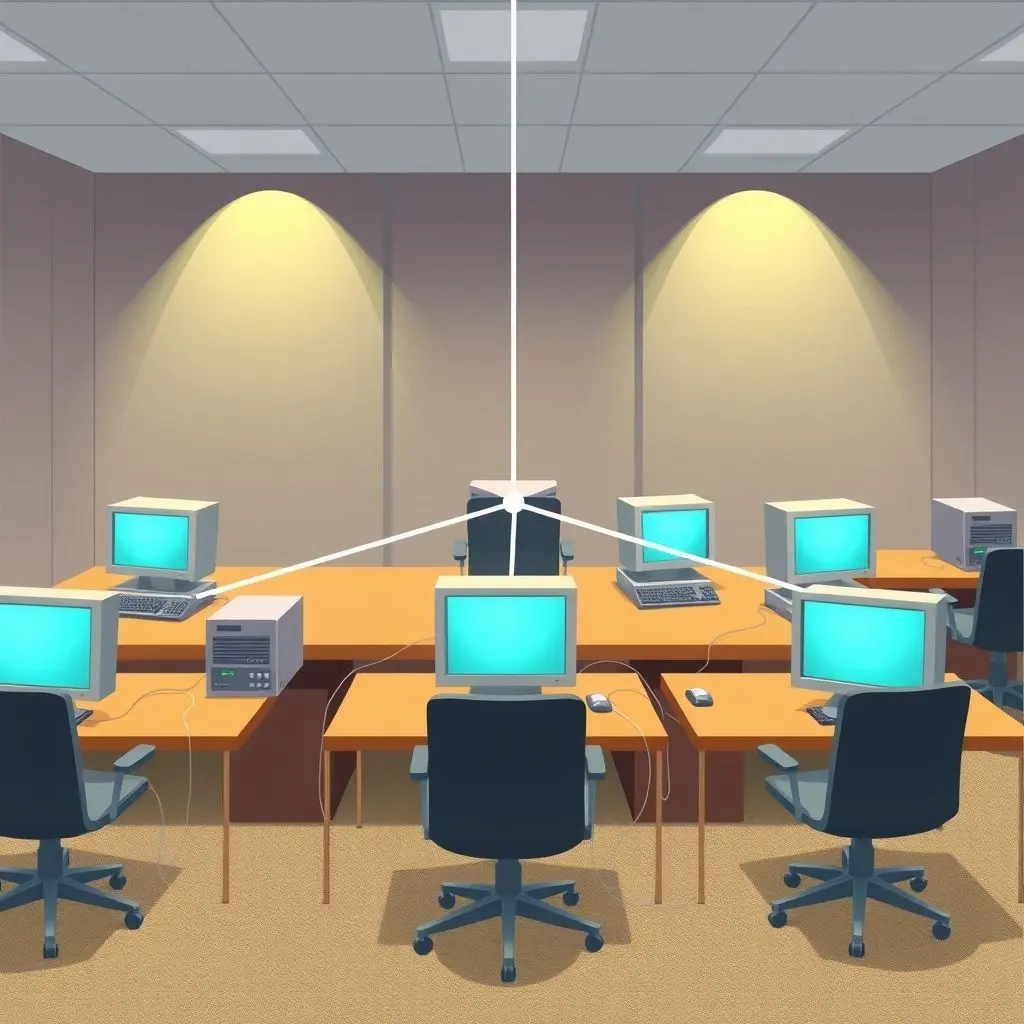
The “Failure to Capitalize” Narrative
The story of PARC often comes with a bittersweet footnote: despite inventing so much of the future, Xerox itself didn’t fully reap the commercial rewards. Why? It’s a complex issue, not a simple case of incompetence.
Xerox was, at its core, a copier company with a highly successful business model centered around selling and leasing physical machines. Shifting the company’s focus and sales structure to software, personal computers, and networking hardware was a massive challenge. There was internal resistance, a misunderstanding of the emerging personal computing market, and difficulty translating revolutionary lab prototypes into marketable, affordable products.
Famously, members of Apple (including Steve Jobs) visited PARC in 1979 and were deeply impressed by the Alto and its GUI. This visit heavily influenced the development of the Apple Lisa and later the Macintosh, which brought the GUI and mouse to a mass market (though Apple added significant innovations of their own).
The Enduring Legacy
Even if Xerox didn’t become the dominant force in the computer industry, the impact of PARC is undeniable and immeasurable. The concepts and technologies they pioneered formed the bedrock upon which the personal computer revolution was built.
The GUI and mouse are now standard on virtually every computer and have influenced the design of smartphone interfaces. Ethernet became the standard for wired networks globally. The spirit of innovation fostered at PARC, with its focus on user interaction and interconnected systems, continues to influence technology development today.
PARC stands as a powerful reminder that groundbreaking innovation doesn’t always happen where you expect it, and that building the future is often a collaborative, iterative process, even if the original architects don’t build the final skyscrapers.
FAQs about Xerox PARC
Q: Did Apple steal the GUI from Xerox PARC?
A: While Apple engineers (including Steve Jobs) visited PARC and were heavily inspired by the Alto and its GUI, the version implemented in the Apple Lisa and Macintosh was developed independently by Apple, building upon the core concepts but with different implementations and significant refinements aimed at a mass market. It’s more accurate to say Apple *adopted* and *commercialized* the GUI/mouse paradigm than stole a direct implementation.
Q: What happened to Xerox PARC?
A: PARC still exists today, though it was spun off from Xerox in 2002 and is now a subsidiary of the Japanese company Ricoh. It continues to conduct research in various areas, but its most famous period was arguably its early decades.
Q: Were the Alto, GUI, Mouse, and Ethernet the only things invented at PARC?
A: Absolutely not! PARC was incredibly prolific. Other significant innovations included laser printing technology, PostScript (which led to desktop publishing), Smalltalk (an early object-oriented programming language), bitmapped graphics, and early forms of ubiquitous computing and internet protocols.
Q: Why was the Xerox Star not successful?
A: The Star 8010 was technologically advanced but suffered from a very high price tag ($16,000 per workstation, equivalent to over $50,000 today) and was part of a larger, expensive system requiring servers and Ethernet. It was marketed towards corporations as a high-end system for professionals, but the market wasn’t ready for such an expensive, radical shift in computing yet. Apple’s Macintosh, launched later at a significantly lower price, found a much wider audience.
A Foundation Laid
Looking back, it’s clear that the researchers at Xerox PARC didn’t just invent pieces of technology; they invented a *way* of interacting with computers that would define the next fifty years. Their work on the Alto, the GUI, the mouse, and Ethernet wasn’t just incremental improvement; it was a paradigm shift. While Xerox didn’t become the computing superpower many might have expected, the seeds of innovation sown at PARC blossomed into the digital landscape we inhabit today. It’s a story of brilliant minds, ambitious goals, and a legacy that truly changed the world, bit by brilliant bit.
